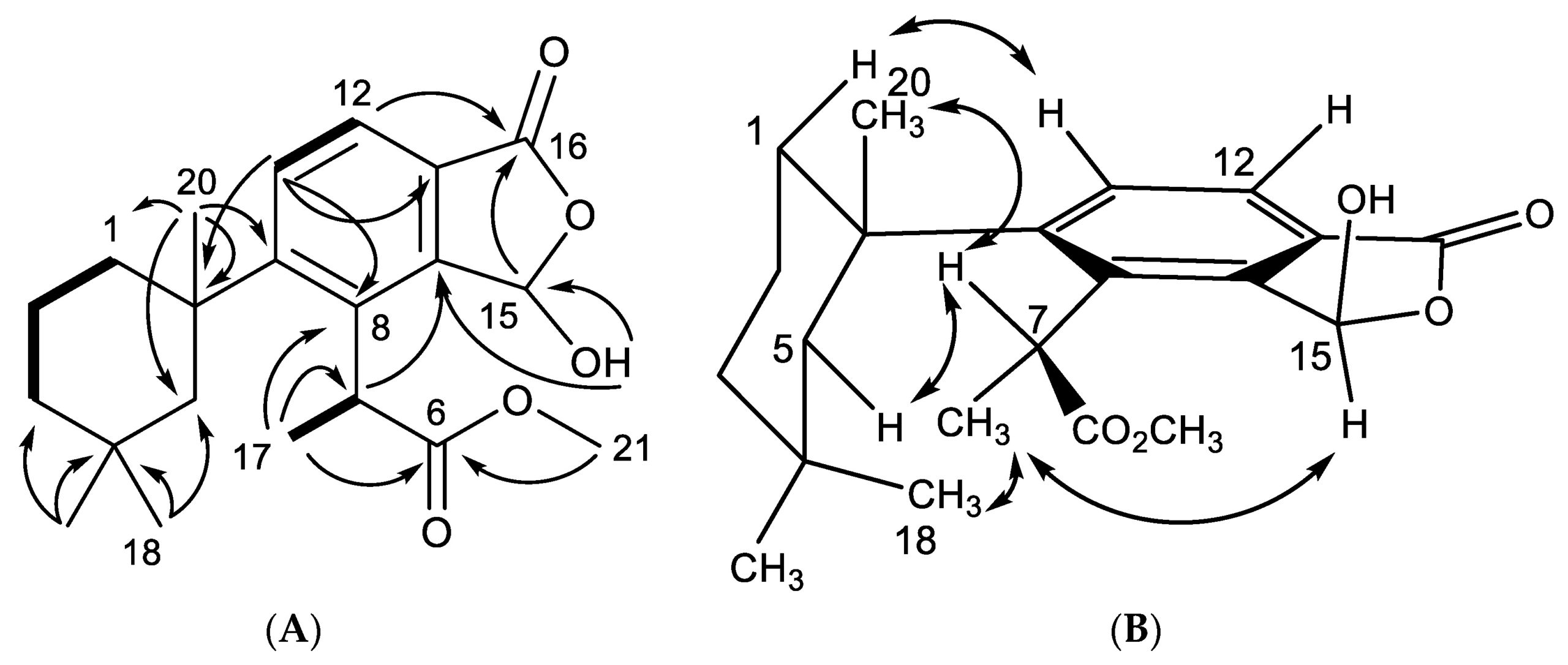Bioactivity of Spongian Diterpenoid Scaffolds From the Antarctic Sponge Dendrilla antarctica

The Antarctic sponge Dendrilla antarctica is rich in defensive terpenoids with promising antimicrobial potential. Investigation of this demosponge has resulted in the generation of a small chemical library containing diterpenoid secondary metabolites with bioactivity in an infectious disease screening campaign focused on Leishmania donovani, Plasmodium falciparum, and methicillin-resistant Staphylococcus aureus (MRSA) biofilm. In total, eleven natural products were isolated, including three new compounds designated dendrillins B-D (10–12). Chemical modification of abundant natural products led to three semisynthetic derivatives (13–15), which were also screened. Several compounds showed potency against the leishmaniasis parasite, with the natural products tetrahydroaplysulphurin-1 (4) and dendrillin B (10), as well as the semisynthetic triol 15, displaying single-digit micromolar activity and low mammalian cytotoxicity. Triol 15 displayed the best profile against the liver-stage malaria parasites, while membranolide (5) and dendrillin C (11) were strong hits against MRSA biofilm cultures.
Alexandre Bory, Andrew J Shilling, Jessie Allen, Ala Azhari, Alison Roth, Lindsey N Shaw, Dennis E Kyle, John H Adams, Charles D Amsler, James B McClintock, Bill J Baker. Mar Drugs. 2020 Jun 23;18(6):E327. doi: 10.3390/md18060327.
